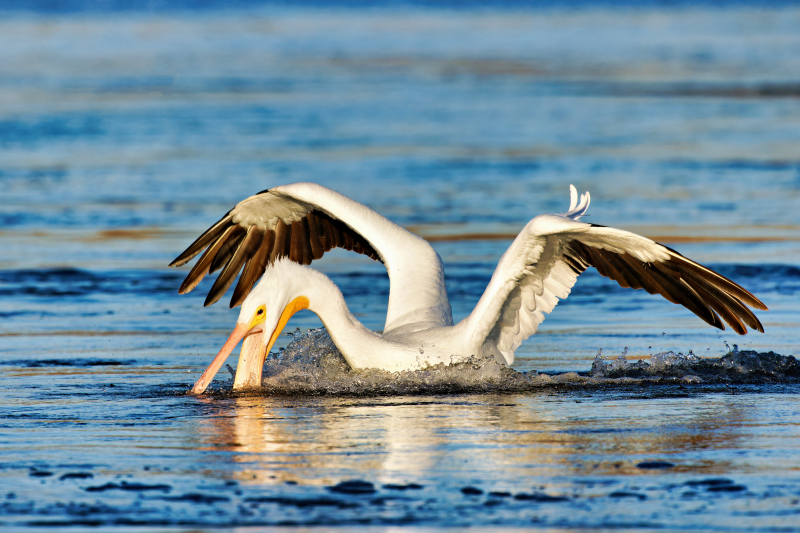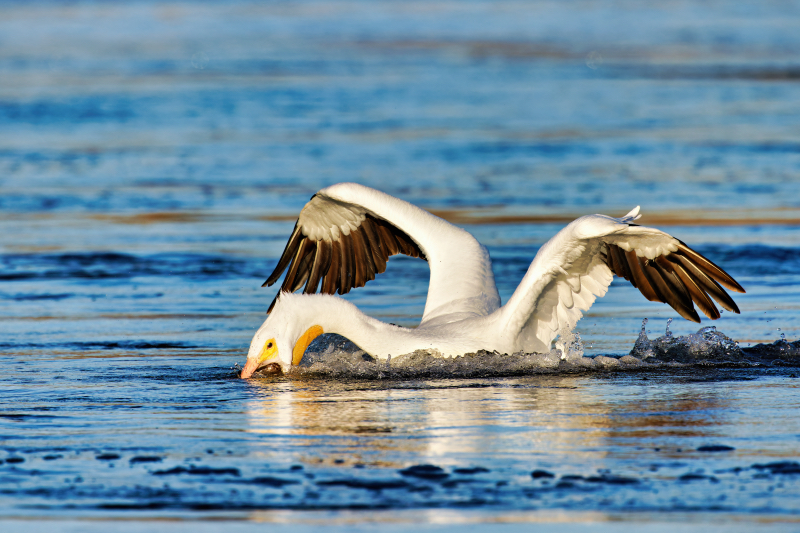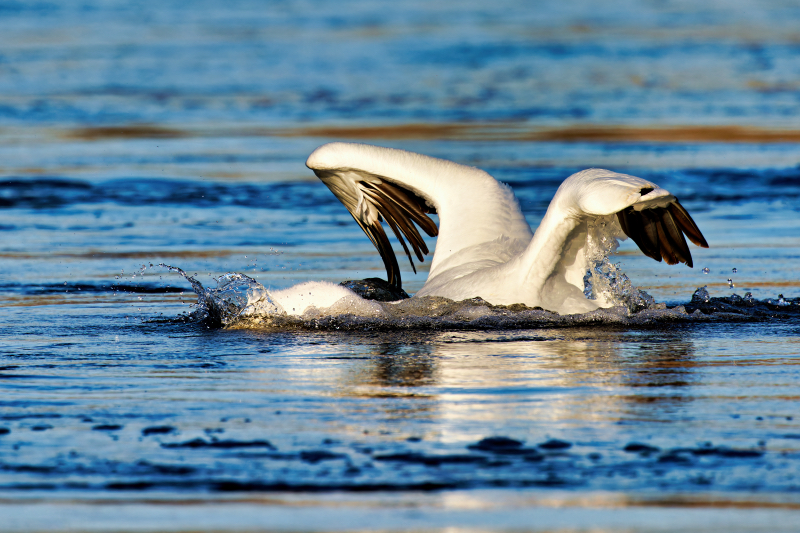Yesterday, I wrote a blog post and shared some photos of a female Northern Harrier that I photographed in a field close to Kerr Dam in Oklahoma. Today, I sharing some photos of an American White Pelican catching something in the river below the same dam.

To get a better angle for photographing birds in the river, I carried my camera and lens down the large rocks. It takes me a while to do this because these rocks are difficult to navigate with my equipment. Once I get near the water, I sit on the rocks and begin photographing the action occurring in front of me.

The American White Pelicans catch fish differently in this location than they did in the small lake that I wrote about in a previous blog post. In that blog post, I wrote that they will form groups to corral fish into the shallows where they can easily gulp them up.
However, in the Arkansas River below Robert S. Kerr Lock and Dam, one Pelican will fly near the dam and begin floating backward down the river. As it floats backward, I notice that it dips its large beak into the water and scoops up fish. Most of the time I can’t see what it caught, but I can see something pressing against the large pouch before it swallows it.
I have also observed that these birds can steal fish from Gulls and Double-crested Cormorants. Sometimes, the Gulls will dive and catch a large fish they have trouble lifting out of the water. As soon as a Pelican sees the Gull struggling with the fish, it will fly over and get close to the gull, causing it to drop the fish, which the Pelican then scoops up. It does the same to the Double-crested Cormorant. When the Double-crested Cormorant dives and comes back up with a large fish that it has trouble swallowing, the Pelican will take advantage of this and fly toward the Cormorant, causing it to drop the fish. The Pelican then scoops it up.

In the photos I am sharing today, the Pelican floated and caught something after dipping its large beak. You will also notice that these birds will submerge their beak deeper into the water than they normally do in lakes. Its head goes completely underwater.
It is always fascinating to watch and photograph how differently these birds fish in this area.
Image Information (First Image):
- Date: 12/11/23
- Time: 09:14 AM
- Camera: Canon EOS R5
- Lens: RF 100-500mm F4.5-7.1 L IS USM
- ISO: 800
- Aperture: 8
- Shutter: 1/3200
- Exp. Comp.: -0.3
- Lens (mm): 500
- Program Mode: Manual
